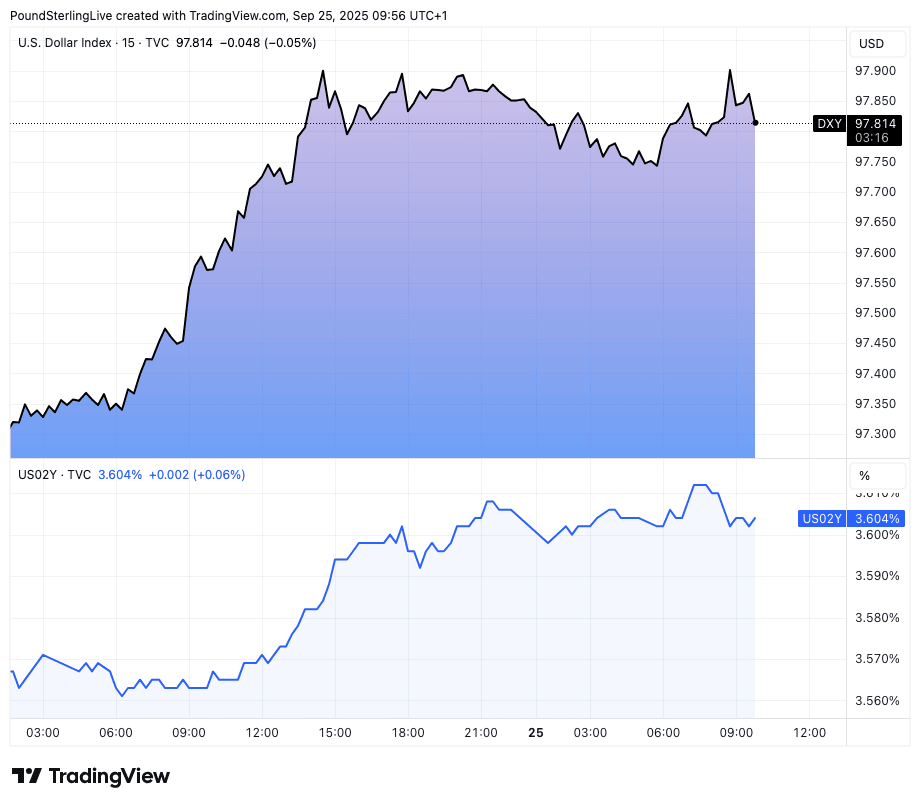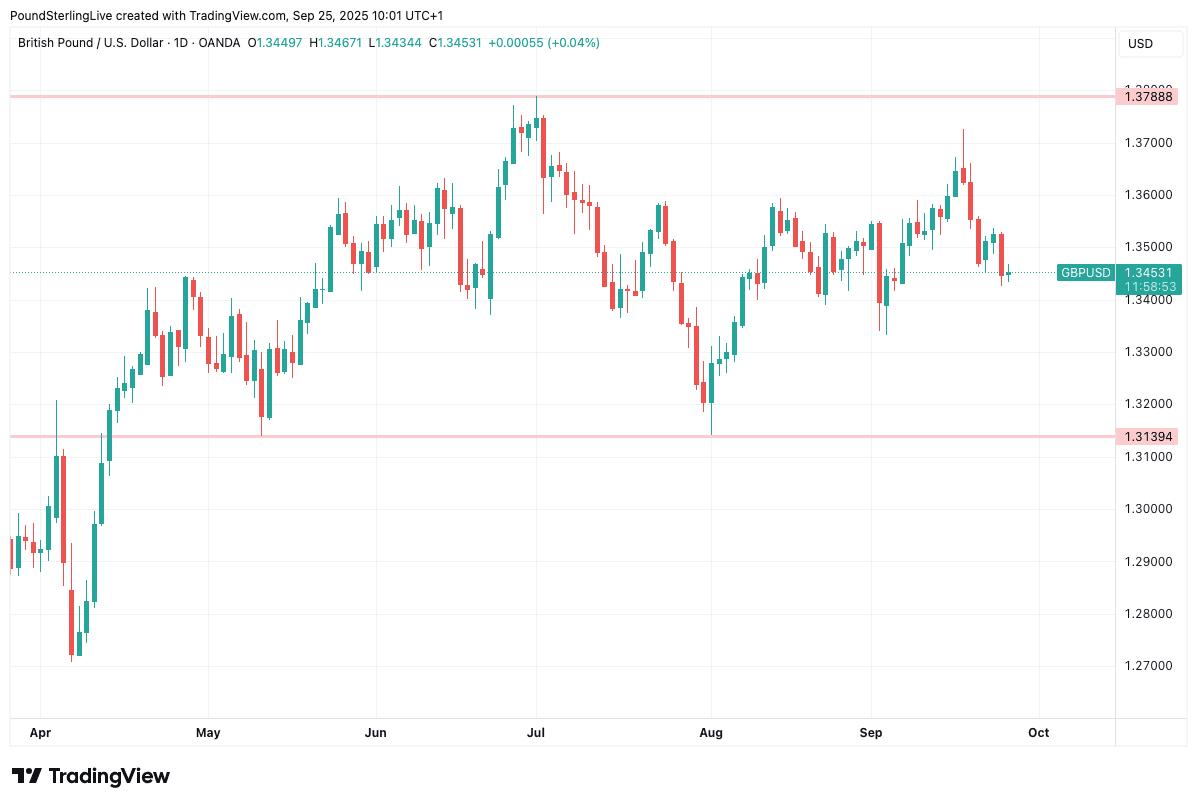
Image © Adobe Images
We drill into the reasons why the dollar surged against the pound, euro and all other contenders in recent hours.
The dollar index - a measure of broad USD performance - rallied 0.64% on Wednesday and tops up that gain on Thursday, pushing the pound to dollar exchange rate (GBP/USD) to a three-week low at 1.3426 and EUR/USD to a one-week floor at 1.1736.
There is no single driver, but a confluence of important factors is at play, all of which are valid for those watching USD rates.
Brent Donnelly, strategist at Spectra Markets, says month-end flows could be behind the move.
"The dollar demand is showing up on schedule as we near the end of the month. Corporates (USD buyers) tend to be time-sensitive and price-insensitive while central banks and hedgers (USD sellers) are currently patient and level-dependent. This has led to a very short-term mismatch of supply and demand," he explains.
At the end of the month investors shift billions worth of currencies to balance the currency exposure on their portfolios. It's a real thing, but timing, scale and other factors make it quite tricky to identify.
"The U.S. dollar spared no one," says a market briefing from KBC Bank. "Backed by some UST underperformance, the greenback rallied against all of its major peers," says Edward Bell, analyst at Emirates DNB.
UST refers to U.S. treasuries, the bonds issued by the U.S. government in order to borrow money. As they fall in value the yield they offer investors rises, which attracts foreign capital into the U.S. and bids up the currency in the process.
A potential driver for this selloff in UST and associated USD buying could have been an interesting data release.
Above: The dollar index (top) and the two-year U.S. treasury yield.
"There was a sharp gain in the U.S. dollar against peer currencies overnight as U.S. economic data remains relatively positive. EURUSD fell by almost 0.7% to 1.1738 while USDJPY spiked by nearly 0.9% to 148.90. GBPUSD was another notable loss with a decline of 0.6% to 1.3447," says Bell.
The release that turned heads was U.S. new home sales, which caught all economists by surprise having risen 800k in August, which is a gain in excess of 20% on the previous month.
"That was the strongest level since the start of 2022 and represents a material deviation from levels recorded over the rest of 2025," says Bell. "As rates move lower in the US and mortgage costs follow, that could create further housing demand."
With the Federal Reserve saying it will only cut interest rates further if the data warrants, such above-consensus readings ultimately lessen the case for further easing.
This weighs on USTs, raising their yields and boosting the dollar.
Prior to all this the USD received something of a boost from Fed Chair Jerome Powell's Tuesday comments, where he said that "uncertainty around the path of inflation remains high."
Powell said on the occasion of last week's Federal Reserve interest rate cut that further moves were dependent on the data, and he backs this stance with his latest comments.
He is not willing to verify the market's current assumption that a generous flow of rate cuts is in the offing. Those new home sales figures will back his stance.
"Chair Powell covered familiar ground but did not signal that he is in a rush to ease policy. Some of the FX market’s intransigence may have faltered this morning with the USD gaining versus G10 FX," says Daragh Maher, senior FX strategist at HSBC.
Analysts are still inclined to view the current USD rebound as being potentially short lived and part of a multi-week consolidation phase.
"We expect the USD to grind gradually higher over the next 1-3 months, but we maintain our view of a weak USD over a 6- to 12-month horizon," says Iris Yuen, Investment Strategist at Standard Chartered.
Above: GBP/USD trades to the centre of the range that has held for most of this year.
Looking further ahead, the consensus continues to look for an extension of multi-year depreciation that has only just begun.
"Challenges to the USD remain in place, including the issue of Fed independence, and the potential for rising risk appetite alongside Fed easing and resilient US activity," says Maher.
U.S. President Donald Trump is said to be pursuing a weaker dollar to help boost U.S. exports, something the Fed can help with via lower interest rates. It's this policy that gives us the unusual political appointment of Stephen Miran - a keen proponent of a weaker USD policy - to the Federal Reserve's Board of Governors.
Lower Fed rates, meanwhile, prop up the domestic economy, which is a boon to Trump's popularity. He is seen to be pressuring the Fed on multiple fronts to achieve these ends, and economists warn this will potentially undermine U.S. assets over the longer term.
"Reducing the Fed's independence is a worry to markets because decades of economic research show that central bank independence is associated with lower inflation, at little cost in terms of activity or employment," says Marc Giannoni, an economist at Barclays. "Major policy shifts or a failure to reaffirm the 2% inflation target would likely trigger a repricing of rates and inflation expectations."


